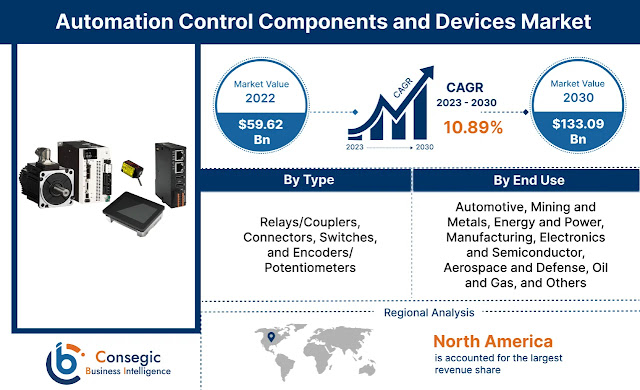PMOLED Market Market: Lighting the Way to Smarter Displays
In a world demanding ever-smarter, thinner, and more energy-efficient displays, Passive Matrix OLED (PMOLED) technology is experiencing a sharp resurgence. From compact wearable gadgets to automotive dashboards and medical equipment, PMOLEDs are emerging as a preferred display solution due to their flexibility, clarity, and low power consumption. As consumer preferences shift toward sleeker, low-energy electronics and industries seek robust display integration, the PMOLED Market Market is capturing the attention of developers, manufacturers, and investors alike.
2. Market Size and Growth Potential
The PMOLED Market has seen a rapid uptick in value, driven by its scalable use across multiple verticals. In 2023, the market stood at USD 4,305.31 million, growing to USD 5,017.66 million in 2024. Looking ahead, the sector is forecasted to surge to USD 16,546.33 million by 2031, with a compound annual growth rate (CAGR) of 18.3% from 2024 to 2031.
This exponential growth highlights increased adoption of PMOLEDs in both consumer and industrial sectors. The rise in connected devices, demand for compact form factors, and greater awareness of energy efficiency are pushing PMOLEDs to the forefront of display technology investment and innovation.
3. What’s Driving the Market?
Several factors are accelerating the rise of the PMOLED Market:
-
Technological Advancements: PMOLED displays are becoming brighter, thinner, and more flexible, with improved contrast and lower power usage—ideal for portable, battery-powered applications.
-
Growing Demand for Wearable Tech: From fitness bands to smartwatches, PMOLED displays are highly favored for their sleek aesthetics and ability to operate efficiently in compact devices.
-
Automotive Display Integration: Automakers are increasingly using PMOLED panels for digital dashboards, heads-up displays, and infotainment systems, adding to their appeal.
-
Sustainability Focus: PMOLEDs are more eco-friendly than traditional LCDs, requiring fewer raw materials and offering better energy profiles, aligning with green manufacturing goals.
4. Drivers, Restraints, and Opportunities
-
Drivers
-
Rising demand for low-power, high-contrast displays in IoT and consumer electronics
-
Growing use in healthcare monitoring devices and automotive clusters
-
Flexibility in form factor design allowing integration into curved and wearable surfaces
-
-
Restraints
-
Shorter lifespan compared to AMOLED and TFT displays
-
Limited screen resolution for high-definition applications
-
Higher initial production costs in certain segments
-
-
Opportunities
-
Untapped potential in emerging markets for smart healthcare and automotive tech
-
R&D in transparent and stretchable PMOLEDs
-
Integration with IoT ecosystems and voice/gesture-controlled interfaces
-
5. Market Segmentation
The market is segmented by:
-
By Type:
-
Transparent PMOLED
-
Flexible PMOLED
-
-
By End-User:
-
Consumer Electronics
-
Automotive
-
Healthcare
-
Others
-
Segmentation Summary:
These divisions allow businesses to align product development with specific needs—be it durability for automotive use or ultra-thin designs for wearables. Understanding type and end-user categories enables more targeted innovation and go-to-market strategies.
6. Segmental Opportunities
-
Largest Subsegment:
Consumer Electronics leads the market, driven by the widespread use of PMOLED displays in smartphones, fitness trackers, and smartwatches. Their ability to deliver crisp visuals with low power draw gives them a clear edge. -
Fastest-Growing Subsegment:
Healthcare is seeing the fastest growth, with PMOLEDs increasingly being used in portable monitoring equipment, smart medical wearables, and digital thermometers—especially as remote patient monitoring gains traction.
7. Regional Trends
-
North America:
Early adoption of smart wearables and the growing DIY tech culture drive steady growth. The region also benefits from strong innovation ecosystems in medtech and automotive. -
Asia-Pacific:
The fastest-growing region, fueled by rapid urbanization, rising disposable incomes, and the concentration of electronics manufacturing hubs in countries like South Korea, Japan, and China. -
Europe:
Growth is driven by sustainability initiatives and consumer interest in compact, eco-friendly gadgets. The automotive sector, especially in Germany, is also a major contributor. -
Latin America and Middle East & Africa:
These emerging regions are gradually gaining pace due to increasing smartphone penetration, infrastructural upgrades, and growing awareness of connected health and security solutions.
8. Challenges and Innovation
Challenges:
-
Limited screen resolution compared to active-matrix OLED alternatives
-
Higher manufacturing costs at low volumes
-
Awareness gap in emerging markets about PMOLED benefits
Innovations Solving These Issues:
-
Modular PMOLED panels that reduce design complexity
-
IoT integration for seamless connectivity across smart environments
-
Use of eco-friendly materials and production methods to align with environmental standards and reduce costs
9. Top Key Players in PMOLED Market Market are:
Futaba (Japan)
Wisechip (China)
Raystar Optronics (Taiwan)
Winstar (Taiwan)
Sony (Japan)
L.G. Display (South Korea)
Samsung Display (South Korea)
Pioneer (Japan)
10. Outlook: What’s Ahead?
The future of the PMOLED Market is not just about displays—it's about connected experiences. As consumers and industries alike demand more from their devices, PMOLED displays will play a key role in bridging design with function. Customization, modularity, and energy savings will be central themes. Innovations like transparent screens, curved designs, and green tech are expected to push adoption even further.
In the next decade, expect PMOLEDs to be integral to smart cities, healthcare ecosystems, and digital vehicles, transforming from passive components to active enablers of intelligent interaction.
11. FAQs Section
Q1: What is the current market size and future forecast for the PMOLED Market Market?
As of 2024, the market is estimated at USD 5,017.66 million and is expected to reach USD 16,546.33 million by 2031, growing at a CAGR of 18.3%.
Q2: Which segment leads the market?
The Consumer Electronics segment leads the market due to its high demand for energy-efficient, compact displays.
Q3: Which region shows the fastest growth?
Asia-Pacific is the fastest-growing region, powered by urbanization, manufacturing dominance, and tech adoption.
Q4: What innovations are driving the market forward?
Flexible form factors, transparent displays, IoT-ready panels, and eco-materials are among the key innovations propelling market expansion.




Comments
Post a Comment